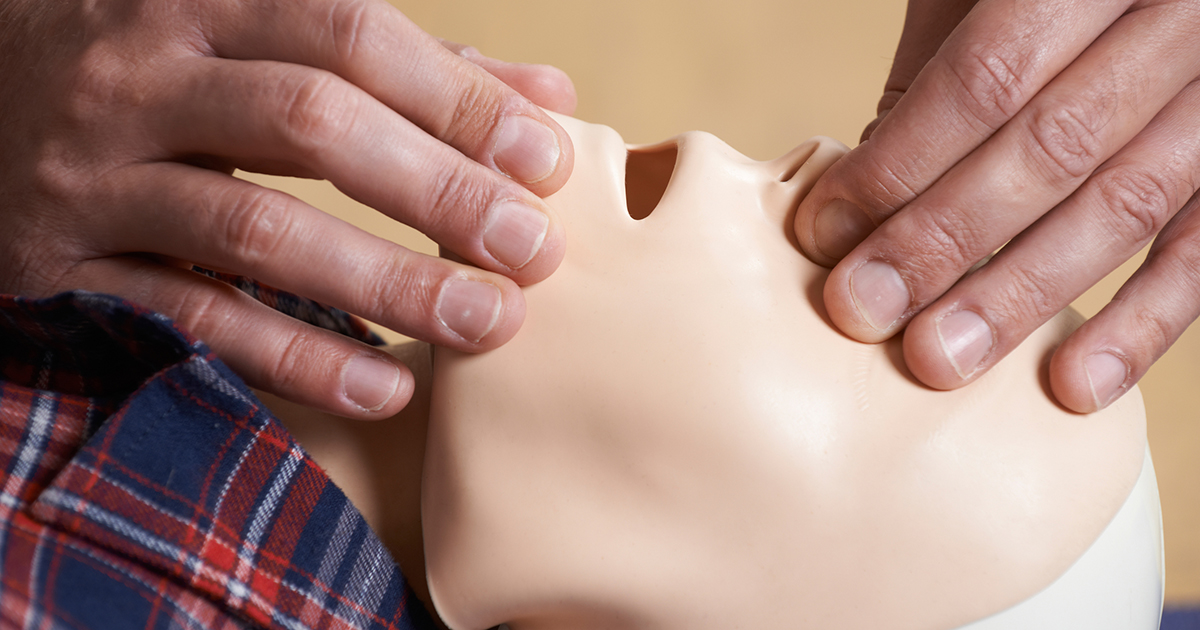A Step-By-Step Guide To Performing CPR
The Importance Of Compressions

Chest compressions are the most essential part of CPR. Correct hand placement is also important for the safety of the patient. With two fingers, locate the point where both sides of the bottom of the ribcage come together. This is the bottom of the sternum or breastplate. Holding your fingers as a place marker, place the heel of your other hand just above your fingers. Then remove your two fingers and place that hand on top of the other hand, interlacing your fingers. Straighten your arms. Using your upper body, press down on the person's chest. You will want to push about two inches inward. Allow your hands to raise enough, after each compression, for the chest to fully expand. Keep contact with your hand placement so your hands do not move out of place to minimize injury. Your goal is to perform thirty presses. You are imitating the beat of a heart. Some paramedics suggest humming the tunes 'Staying Alive' by the Bee Gees or 'Another One Bites The Dust' by Queen, to keep the correct rhythm. Please try not to sing out loud.
Learn more about performing CPR now.
Airway: Opening Up The Airway

After every thirty chest presses, you will need to give two lifesaving breaths to the person. To perform this technique, make sure to open their airway. Tilt the person's head back by gently placing your hand behind their neck and lifting slightly. At the same time take two fingers and place them below their chin, tilting their chin upward. Their chin should be aimed at the ceiling to open the airway. The importance of physically opening the airway is structural. When we lay on our backs, the soft tissue of our throat relaxes and can obstruct the airway. If you wonder why your spouse snores at night, this is probably the reason.
Get the details on breaths in CPR next.
